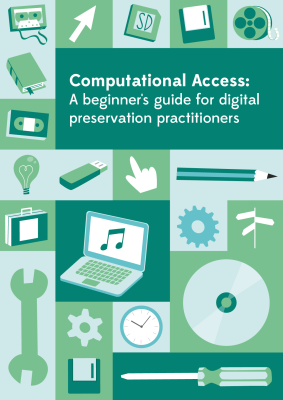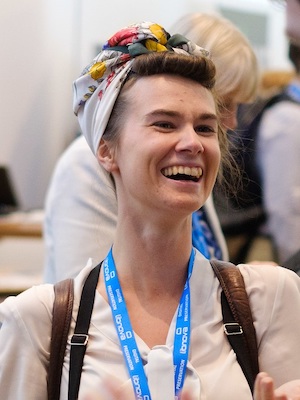The computational access guide and a panel at iPres
Posted on 22 November 2022
The computational access guide and a panel at iPres
By SSI Fellow Leontien Talboom.
This blog post is an update on the computational access guide which I wrote about earlier this year. In the previous post I talked about the workshop that we had organised and the first steps in creating a computational access guide for the digital preservation community. In this post I will highlight the new guide that is now publicly available on the Digital Preservation Coalition (DPC) website, and also talk about the panel session that we organised for iPres which discussed further themes and topics from the guide.
The computational access guide
 The computational access guide was released over the summer. As part of its launch we scheduled a launch party and asked a number of people to present their work in relation to computational access. All the presentations from our speakers have been added as case studies to the guide. For the DPC members on the other side of the world we organised a (very early) watch party, where we went through the highlights of the launch party. I was also invited to speak during the summer webinars series of the Open Preservation Foundation (OPF) and decided to focus on the computational access guide.
The computational access guide was released over the summer. As part of its launch we scheduled a launch party and asked a number of people to present their work in relation to computational access. All the presentations from our speakers have been added as case studies to the guide. For the DPC members on the other side of the world we organised a (very early) watch party, where we went through the highlights of the launch party. I was also invited to speak during the summer webinars series of the Open Preservation Foundation (OPF) and decided to focus on the computational access guide.
The guide itself has been split into a number of sections: introduction, definitions, approaches to computational access, ethics of computational access, benefits and drawbacks, practical steps to get started and further resources and case studies. We thought it was important here to aim this guide at digital preservation practitioners who may have heard about computational access and would like to explore it further, but are unsure where to get started. By starting with definitions and also dedicating a space to the benefits and drawbacks we hope that practitioners in our community can make a better decision on whether this type of access is a possibility for their organisation.
This guide would not have been possible without the help from practitioners within our community, it really felt like a team effort. From the expert workshop at the beginning of this year, to all the great feedback and the wonderful case studies that are part of this guide.
Panel Session at iPres
As this guide was not able to cover everything, we decided to take this work to iPres and discuss it with the wider community in the shape of a panel. Jenny Mitcham led the panel. James Baker and Sonia Ranade joined us on the panel. We discussed several topics that we were unable to cover in detail in the guide. Everyone brought different perspectives to the session and the audience engagement was great as well. The proceedings from this conference have been made available (our session can be found on page 418).
Topics that were discussed include resources and infrastructure, communicating with stakeholders, engaging an audience and ethics around using computational tools. We ended on a positive note, which was a great idea from Jenny, where we got the opportunity to highlight one of our favourite resources. I always find this a great opportunity to highlight the GLAM Workbench, as it really showcases what is possible with openly accessible digital material.
Honestly, check out the detail on Leontien’s self-knitted jumper. The dinosaur is super cute but the cactuses also *rock*! #iPres2022 pic.twitter.com/v2lgGCRVuJ
— Alicia Wise (@wisealic) September 13, 2022Alongside the panel it was great to have the opportunity to attend iPres this year. It was lovely to see familiar faces and meet a whole bunch of new people. I also got the opportunity to show off all my digital preservation knitwear. Anyone interested in the knitting charts, they can be found on my Twitter.

